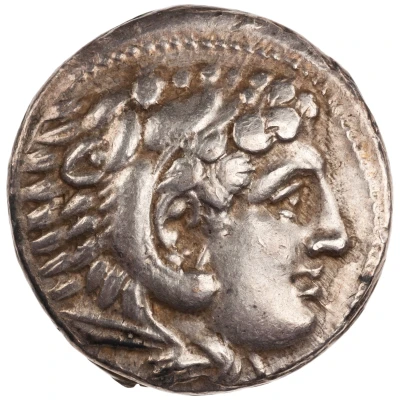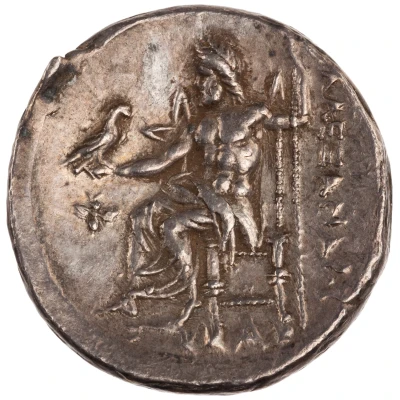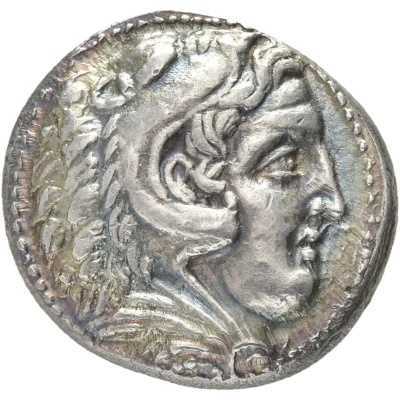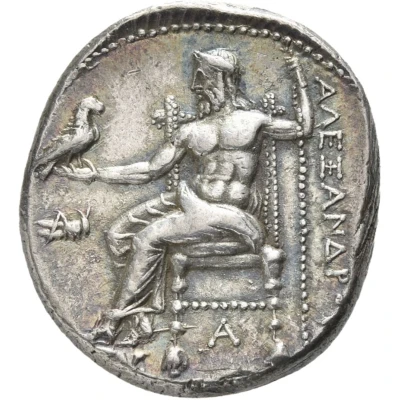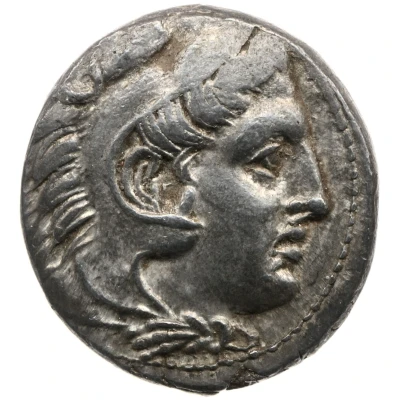
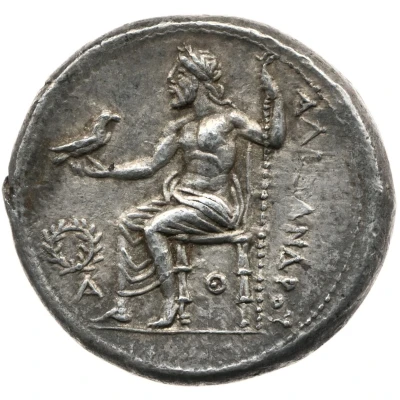

© British Museum
Tetradrachm In the name of Alexander III; Pella 325 BC - 315 BC
| Silver | 17.22 g | 26 mm |
| Issuer | Kingdom of Macedonia |
|---|---|
| Type | Standard circulation coin |
| Years | 325 BC - 315 BC |
| Value | Tetradrachm (4) |
| Currency | Drachm |
| Composition | Silver |
| Weight | 17.22 g |
| Diameter | 26 mm |
| Shape | Round (irregular) |
| Technique | Hammered |
| Orientation | Variable alignment ↺ |
| Demonetized | Yes |
| Updated | 2024-10-10 |
| Numista | N#401978 |
|---|---|
| Rarity index | 100% |
Reverse
Zeus seated on stool-throne left, eagle on outstretched right hand, sceptre in left hand; in left field wreath and A, below throne Θ.
Script: Greek
Lettering: ΑΛΕΞΑΝΔΡΟΥ
Translation: Alexander (III, the Great)
Interesting fact
The Tetradrachm coin was used during the reign of Alexander the Great's father, King Philip II of Macedon. It was a widely used coin throughout the ancient Greek world and was considered a standard unit of currency. The coin's design featured the image of a youthful Alexander the Great on one side and his father, Philip II, on the other. The coin was made of silver and weighed around 17.22 grams, as . It's interesting to note that the Tetradrachm coin was not only used for financial transactions but also had cultural and religious significance. It was often used as a form of offering to the gods or as a way to commemorate important events or victories. The coin's design and symbolism represented the power and influence of the Macedonian Empire, which was rapidly expanding during this time period.
